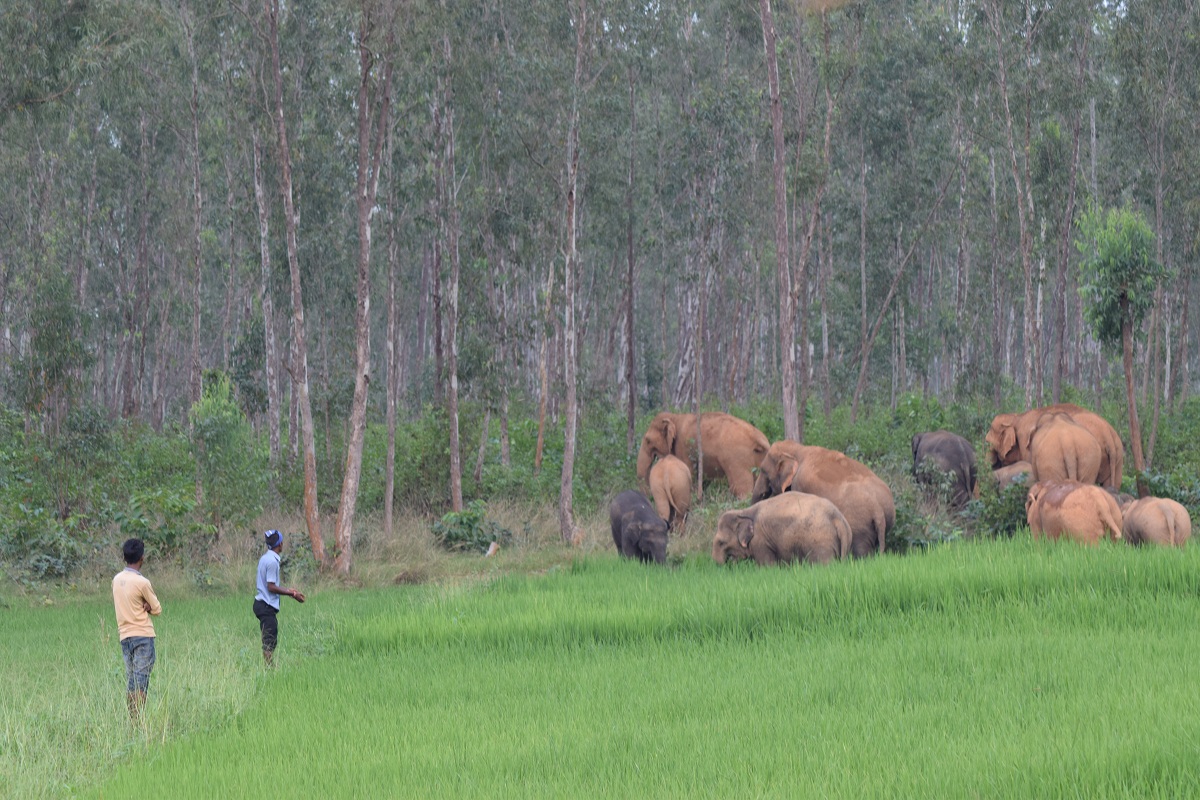As World Elephant Day is being observed across the country, the disturbing facet of the population of these majestic animals in Odisha is that jumbos are marked by gender imbalance with adult tuskers fast disappearing from their habitats.
With the large scale poaching of tuskers over the years, the gender imbalance is fast emerging as a major threat to the elephant population growth in Odisha with the drastic drop in the numbers of adult breeding tuskers.
As against 1,902 female species, the male population of elephants stands abysmally low at 344. The conservative figures put adult males including sub-adults at about 150-175 but the large adult breeding males above the age of 20 to 25 could be as less as 80 to 100. Mating by immature males will lead to the birth of more and unhealthier calves resulting in higher mortality.
The State is home to 1976 elephants conferred the national heritage animal tag. The female species hugely outnumber the population of males. That does not augur well in the overall growth of these heritage animals, according to conservationists.
Odisha figures are fifth in the list of elephant populations in the country with the States of Karnataka, Assam, Kerala and Tamil Nadu being home to more elephant populations. Mayurbhanj, Sambalpur and Mahanadi elephant reserves are home to 1536 elephants, accounting for 77.73% of the total population. These areas have seven wildlife sanctuaries.
The Odisha elephant population now faces the gravest threat as about 20 adult breeding male elephants die each year, mostly to poaching and electrocution.
A dangerous trend of capturing wild tuskers who attack villagers and houses and keeping them in captivity has currently lurked. Earlier this year, the forest department captured two tuskers from Jajpur and Angul districts. One of them died due to injuries while in captivity while the other presently languishes in Kapilash Zoo. The captive tusker should be released in the wild after being radio-collared to track its movement. But precious little has been done in this regard. There is every likelihood of the tusker held in captivity perishing due to indifference on part of authorities, he said.
Over the years, the state has turned into a graveyard for elephants with high mortality rates.
In the year 1979, there were 2044 elephants in Odisha and they ranged widely in the dense forests of Dhenkanal, Deogarh, Mayurbhanj, Keonjhar, Sambalpur, Angul, Sundargarh and Cuttack. At present, the number has dropped to 1,976 as per the latest census conducted in 2017.
Odisha loses more elephants than most elephant bearing States though the elephant populations in some states are more than two-fold than that of Odisha.
The man-made interference and destruction of elephant habitats have frequently led to the outbreak of man-elephant conflict, triggering the loss of lives of both humans and pachyderms.
The jumbos’ population in Keonjhar district has come down to 40 currently from 112 in 2002. The elephants have perished mostly to large scale mining activities in elephant habitats. Dhenkanal district has become the epicenter of man-jumbo conflict as the traditional migration routes were cut off by the Rengali irrigation canal network.
The elephant mortality rate is rising alarmingly over the years. The average death stood at 33 in 1990 and it climbed to 46 a decade later. At present, 78 elephants are dying on a yearly average.











